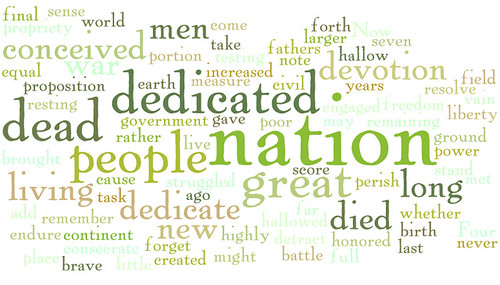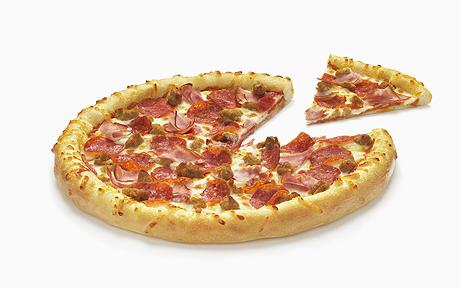This is a guest post by my friend Aamer Jamali. This is the second post in a series.
Having
just returned from Hajj, a number of anecdotes stick out in my mind
which best serve to illustrate the role that modern technology has to
play. Perhaps relating these will serve to outline my thoughts.
I
remember clearly the crush of the people around the Holy Kaaba. The
unified voices calling out in prayer during Tawaaf. The unity in
purpose, in belief, in humanity where differences were forgotten, and
then… “Tell him I will not sell the generator for less than
140,000!”… Huh? Tawaaf in my mind is similar to salaat, an act of
worship which deserves to be treated as such, and yet, the ubiquitous
cell phone had invaded even this holy place, this holy act. To my
right, a man in a traditional thawb and topi was giving tawaaf. In his
left hand, an open prayer book, held down at waist level at his side,
ignored. His right hand to his ear, conducting his business during
this most sacred of all Hajj rituals. I felt like shouting, “come on,
is nothing sacred?” but the thought was a little too literal, and hurt
a little too much. What is the etiquette of cell phone usage in the
Haram? On the one hand are the guards, fruitlessly and totally
ineffectually checking every entering person for cell phones. On the
other is this gentleman, bargaining on a generator while performing
tawaaf. In between are countless others, calling beloved family from
the fringes of haram, relating their thoughts for them from this
holiest of holies, texting friends and loved ones around the globe.
Shooting countless low resolution pictures in bad lighting as if 1.3
megapixels could somehow capture this fleeting existential moment (I
was guilty of this myself). At first these latter behaviors struck me
as rude, but when I stopped to think about it, if the motive underlying
these phone calls to beloveds or pointless pictures was one of intense
respect and veneration for your situation, then what is wrong with that
emotion manifesting itself through a more modern medium? Would anyone
object to someone quietly writing a letter to their parents “Dear dad,
I sat in front of Kaaba and prayed for you today” or sketching the
incredible scene in charcoal?
Cellular phones on Hajj were
everywhere, much as they have become in every aspect of life on every
corner of the globe. But their uses are not limited to the evil and
the crass. Without them, my wife my sister and I would have been
separated on the very first day, and Allah knows if we would have ever
found each other. 2.4 million people, all dressed the same. Without
our trusty mobiles on each of us every second, communication would have
been impossible. It was to the point where if you lost physical
contact with one another, the waves of masses could separate you by an
impassable breach in seconds. In that scenario, the quick text
“waiting under green sign” or “doing one more tawaaf, go home without
me” was essential. I truly cannot fathom (nor do I frankly wish to) my
Hajj experience without a mobile phone. This method of communication
was nothing less than indispensable. This simple act was directly
responsible for so much less headache, worry, and so much more safety
and ability to concentrate more on the task at hand (rather than “where
did my wife go?”), and any technology that can help that should be
encouraged.
One piece of modern technology which I frankly
struggled with was photography. Cameras, cell phone cameras, and video
cameras are officially forbidden, and yet almost everyone has them.
What is the etiquette for photography inside the Haram? You have traveled your whole life to get to this point, and you are there but
for a short time. Why not take pictures to remember your momentous
journey? To show your kids? To teach others preparing for Hajj? And
yet, it seemed at times, garishly tacky and ‘touristy”.
The
corner before Hajre Aswad is called Rukn-e-Yamani. The crowd around
this corner is second only to hajr-e-aswad itself as people throw
themselves against the walls, kiss them, and beg, pray and cry for
forgiveness of their sins. On the seventh time around during one particularly long, crowded, and hot tawaaf, my wife and I approached
this point, humble and ready to prostrate ourselves before Allah, only
to find the man in front of us posing unabashedly with his hand on
Rukn-e-Yamani, smiling widely while his friend tried in vain to get far
enough away to take a reasonable picture (this turned out to be a
futile exercise). This bothered me a little. But photography was
everywhere, including in my own hands (for better or worse). But in
the end, I returned to my sentiment, that if the photographer is moved
by respect and love, what really is the harm in expressing this with
21st century tools?
Finally, a couple of quick lighter anecdotes:
Outside
of Haram in mecca there is no shortage of places to eat, including many
western fast food places such as starbucks (really, did you doubt this
for a second?), burger king, KFC, and Carl’s Jr. (surprisingly no
McDonalds!). At the Burger king in Mecca, the cash registers scrolled
a three line message, two lines at a time:
“Welcome to Burger King/At the Holy Mosque”
Followed by:
“At the Holy Mosque/Have it your way!”
Secondly,
I really, honestly think that as electronics become cheaper, 4
miniature GPS transponders and one mapping device could be sold for
around $50 and you couldn’t keep them on the shelf. Two would go to
two family members to wear on their person, and two would go (more
importantly?) in your check in bags, so you could at all times see
where they were. If you get rich off this idea, please give me 10%,
that’s all I ask.
Aamer H. Jamali, MD, FACC is a cardiologist in Los Angeles.

